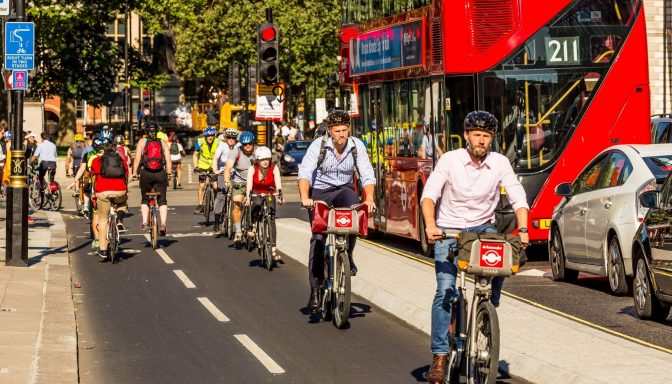So how do you make sure your bike is mechanically sound and how do you keep it that way? Keep it simple by carrying out an M-Check to systematically check all the key components and moving parts for faults or problems.
M-Check: step by step
Starting at the rear tyre, check your bike following the letter M, taking in the saddle and brakes.
Here’s what to look out for:
- Is the rear derailleur fitted correctly and does it shift smoothly?
- Are the axle nuts/quick release tight, with no side-to-side play in the hub?
- Are the brakes fitted securely?
- Are the spokes tight?
- Are the tyres inflated and free from glass, thorns, and nails?
- Is the saddle fitted securely and at the right angle?
- Is the seat post clamp tight?
- Is the front derailleur fitted correctly and does it shift smoothly?
- Are the pedals fitted correctly?
- Do front and rear suspension travel freely?
- Is the frame free from rust, damage, and cracks?
- Are the brakes working correctly? Check right lever (front brake), check left lever (rear brake) - will they stop you in an emergency?
- Does the steering operate freely with no excessive play or obstruction from cables?
- Are the right reflectors fitted?
- Are both wheels spinning freely and straight?
Get into the habit of doing this every time you cycle and you should avoid any major issues. And of course your bike will work better and have a longer lifespan if you look after it properly.
Keep your bike safely on the road
1. Essential tools
It pays to be prepared. With a small selection of tools, you’ll be able to tackle most of the common issues you’re likely to experience while out on your bike. All the items below are designed to be small and lightweight and can be packed into a rucksack or saddlebag that tucks neatly under your saddle until you need it.
- Bike pump - some tyre pumps have a pressure gauge. Dual valve/smart valve pumps are useful.
- Spare inner tube - correct size and valve
- Tyre levers - for removing tyres
- Multi-tool - with minimum of: Phillips and flathead screwdriver 3, 4, 5, 6, 8 hex wrenches
- Chain tool - for removing chain links
- Dumbbell spanner - for nuts
- Self-adhesive repair patches
- Quick link - choose correct speed/size for your chain
2. How to find the correct valve, tyre/tube size
- Check your tyre wall for the tyre size then buy a tube to match
- Check your wheel for valve type: Schrader or Presta
2. Lubricating your bike
A few minutes each week is all it takes to keep your bicycle in good condition. Keep the chain and other moving parts clean and lubricated to extend your bike’s life and avoid some more expensive problems and repairs later on.
Important: only lubricate your bike when it’s dry and avoid getting oil on the brakes and braking surfaces e.g. wheel rims or discs.
Lubrication: step by step
Chain: use the right chain lubrication for the season. Wet is best in autumn and winter and dry works best in summer or dry conditions.

Apply spray-on lubricants behind the sprockets (1). If you’re using dropper or non-propelled lubricants, apply at the lower section of chain (2).
Pedal backwards to apply the oil, ensuring that all the chain receives some but avoid adding too much oil as it will attract dirt and wear the components faster. Let it seep in for a couple of minutes, then rub the chain with a rag.
Gear mechanisms: moving elements of the front (1) and rear (2) mechs need light lubrication. After the oil has dried, rub the mech with a rag to remove any excess.

For more information, including how to fix a puncture, check out Cycling UK’s guides on basic maintenance and repair. They’re designed to be downloaded to your phone so you can refer to them on the move.
But remember, if unsure about your repairs, seek the advice of a qualified mechanic at your local bike shop.
Roadmap to safe and healthy journeys
Find out more about how to make sure you and your bike are fit for the roadChris Alston
Senior Training Officer, Cytech Master Technician, and lead bicycle maintenance tutor


